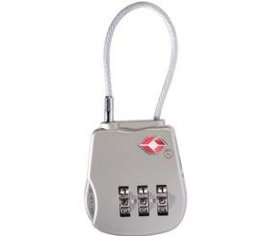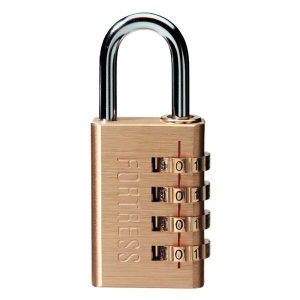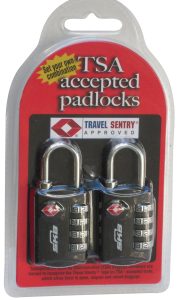Description
Information from TSA about TSA Locks
TSA stands for Transportation Security Administration. TSA baggage handlers screen every passenger’s baggage before it is placed on an airplane. Although TSA has the technology which allows them to electronically screen bags, there are times when they need to physically inspect a piece of luggage. That’s where the TSA Cable Lock comes in. The development the TSA Cable Lock allows security officers access using a universal “master” key which means the lock will not have to be cut. The TSA Lock is engineered to fit any case with a padlock option.
No need to have unlocked Baggage/Shipping/Carrying Cases while traveling anymore. The red-and-white TSA logo on the lock notifies screeners that they can unlock and relock your baggage without having to break the lock open. And with set-your-own combination convenience, you don’t have to worry about loosing the key while you travel.
The Transportation Security Administration (TSA) now suggests you lock your checked baggage with TSA-accepted and recognized locks. Travel Sentry™ Certified locks are accepted and recognized by the TSA. Look for the Travel Sentry™ symbol when shopping for TSA-accepted products.
Airline check-in staff are trained to recognize the Travel Sentry™ mark, so they understand that baggage with this special mark is permitted to remain locked. The TSA screeners have access to special tools that allow them to open TSA-accepted locks in the event that your bags must be opened for inspection.
Airport security professionals no longer need to cut your locks or force your bag open and risk damaging it. They simply open your locks, inspect, and relock your bags, sending them quickly and securely on their way.
The red-and-white Travel Sentry™ logo on TSA-accepted locks notifies TSA screeners that they can unlock, inspect, and relock the bag without damaging the lock




![pelican-tsa-combo-lock-big[1]](https://www.caseclub.com/wp-content/uploads/2017/01/pelican-tsa-combo-lock-big1.jpg)


